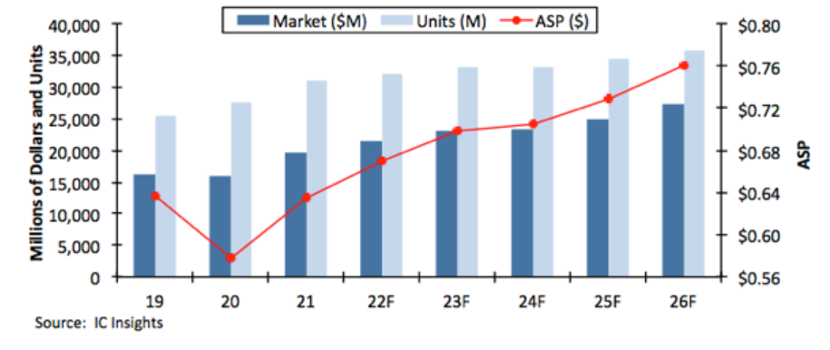March_Automotive MCU|Worldwide MCU Market Trend Analysis (Up)
MCUDevelopment and Market Scale
MCU (Microcontroller Unit) can be called "microcontroller" or "single-chip microcomputer", is the central processing unit (CPU), memory, input/output interfaces (I/O) and other different functional components integrated into a single chip. In the early days, MCUs consisted only of a CPU and memory. Over the past few decades, Intel, Motorola, Microchip, Atmel, and other chipset vendors have continued to develop new technologies to make MCU architectures more complex, and their component frameworks include a central processing unit (CPU), read-only memory (ROM), static random access memory (SRAM), power control (power control), and a memory controller (power control). CPU, ROM, SRAM, Power Control, Timer/PWM, Analog Interface, Clock Control, Connectivity, and GPIO. The read-only memory can use mask ROM and OTPROM, or UV-erase EPROM, electronic erase EEPROM, and Flash ROM, which can be read and written repeatedly. The system programmer on the application side writes the firmware using the Integrated Development Environment (IDE) tool provided by the MCU manufacturer. After development and validation, the firmware is stored in read-only memory through a programmer, and the MCU is then soldered to the motherboard at the electronics assembly plant to control the product's operation. According to market research firm IC Insights, the global MCU market will reach US$19.6 billion in 2021, an annual increase of 23%, and is expected to grow by another 10% to US$21.5 billion in 2022 due to a 10% increase in average selling price as a result of the lack of supply and demand, and the global market is expected to grow by a further 10% to US$21.5 billion from 2021 to 2026. From 2021 to 2026, the global market size and shipment volume will grow at a CAGR of 6.7% and 3.0%, respectively, while the selling price will be 3.5%.
Figure 1: Global MCU Market Size and Average Unit Price Change from 2019 to 2026

Source : IC Insights










